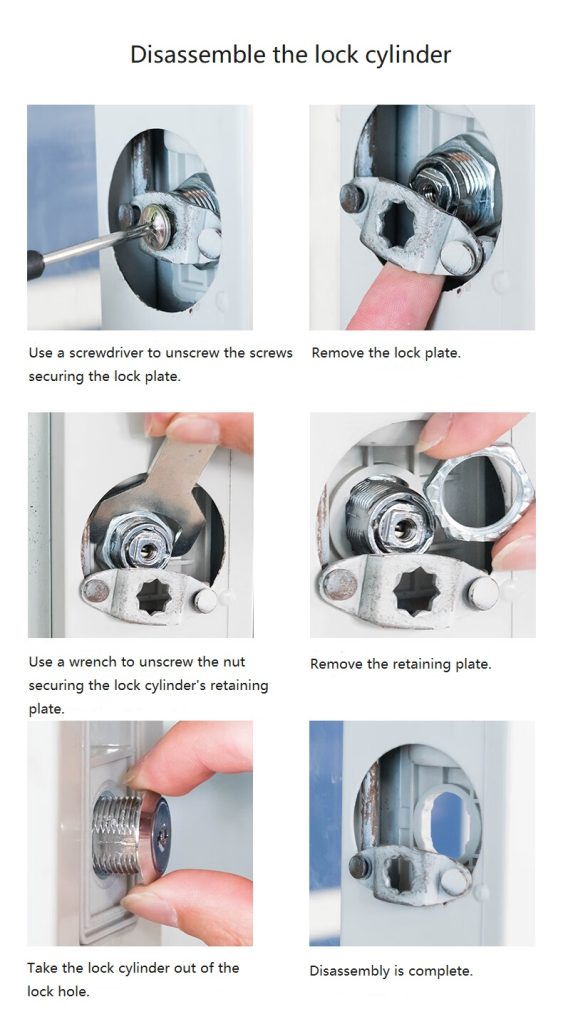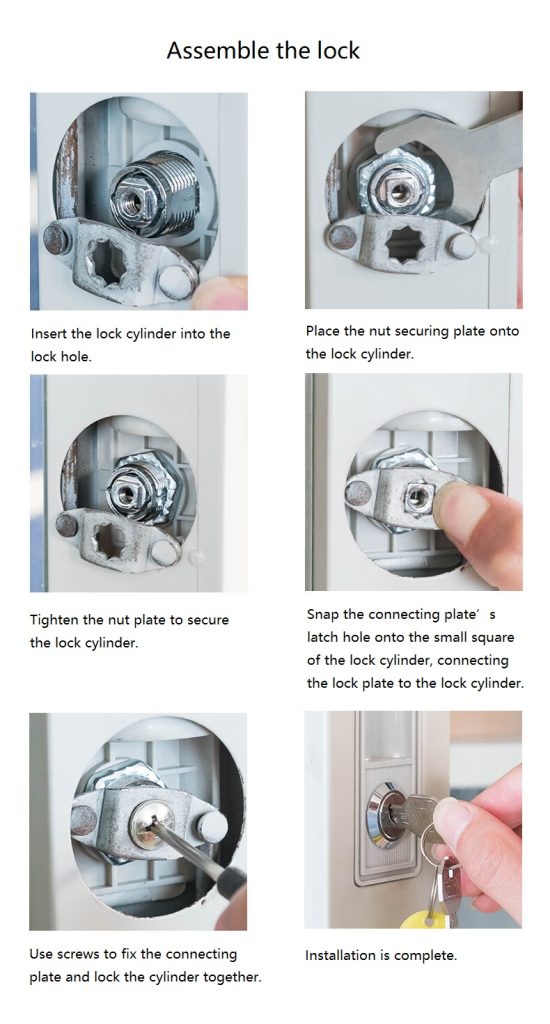Changing the lock on a steel metal locker is a practical task that can enhance security, convenience, and functionality. Whether upgrading an old lock, replacing a damaged one, or simply changing the combination, knowing how to replace the lock properly is essential. In this blog, we will introduce the common types of locks used for metal steel lockers and guide you through the steps of replacing a lock.
Common Types of Locks for Steel Metal Lockers
Before replacing the lock on a steel metal locker, it’s important to understand the different types of locks. Here are the most common types:
Keyed Locks: The traditional keyed lock is the most common type, typically consisting of a metal lock cylinder and key. It is installed in the lock hole of the cabinet door and requires a key to unlock.
Padlocks: A padlock is a common external lock, typically used on the outside of a locker door. It locks the door by inserting the hasp into a lock hole or steel ring on the door handle.
Electronic Keypad Locks: Electronic keypad locks are commonly used in high-security areas and can be unlocked using a code or biometric methods such as fingerprints. They usually include a digital keypad mounted on the door and are powered by batteries.
Mechanical Combination Locks: Mechanical combination locks are unlocked by turning a combination dial, commonly used in schools and gyms. These locks do not require keys and only need the correct number combination to open.
Step-by-Step Guide for Replacing Different Types of Locks
The method for replacing a lock varies depending on the type of lock used on the steel metal locker. Below, we explain the steps for replacing each type of lock.
Replacing a Keyed Lock
Use a screwdriver to remove the screws securing the lock. A keyed lock is usually secured with two or more screws on the locker door. Carefully remove the lock body and take it out of the lock hole.
Align the new keyed lock with the installation position of the old lock, ensuring that the new lock matches the door hole. Use a screwdriver to secure the new lock to the door, ensuring it is tightly fastened.
Use the new key to lock and unlock the cabinet, ensuring that the new lock works properly.


Replacing a Padlock
If the old padlock is damaged or no longer needed, use a screwdriver or scissors to remove the padlock. If the padlock is opened with a key or through a steel ring, use the appropriate tool to remove and detach the padlock.
Insert the new padlock into the locker door’s lock hole or steel ring, ensuring it matches the door. Make sure the padlock is securely fastened and that the hasp properly locks.
Test the padlock’s locking and unlocking functionality to ensure it works smoothly.
Replacing an Electronic Keypad Lock
First, turn off the battery power and remove the electronic keypad lock panel. Use a screwdriver to unscrew and remove the original electronic keypad lock.
Align the new electronic lock with the mounting holes on the door, following the product manual for proper installation. Make sure to connect the battery and wires and install the lock panel correctly.
Set a new password or fingerprint according to the instructions for the electronic lock, ensuring security.
Input the new password or verify the fingerprint to test whether the new electronic lock works correctly.
Replacing a Mechanical Combination Lock
Use a screwdriver to remove the screws securing the old lock and detach the combination lock. If the lock installation is complex, make sure to note how the original lock was installed.
Install the new combination lock at the same position as the old one, ensuring it is firmly secured. Adjust the dial to ensure the lock works properly.
Adjust the combination dial to set the new combination code.
Enter the new combination to test whether the lock opens smoothly.
Important Notes
Ensure proper matching: When replacing a lock, choose a lock that matches the size and shape of the original lock to avoid installing an incompatible lock.
Keep spare keys or codes: Always keep the new keys, codes, or other unlocking methods in a safe place in case of forgetting.
Check security: After installing the new lock, ensure that it effectively prevents unauthorized unlocking and maintains security.
Conclusion
Replacing the lock on a steel metal locker is not complicated, but it is essential to follow the proper method for each type of lock. During the replacement process, make sure you have all the necessary tools and follow the steps carefully to ensure the new lock functions properly and enhances security effectively.





